Once again, climbing the Tibet side of Everest has problems–the teams can’t even cross the border from Nepal into China. Rain is pelting trekkers on the Nepal side, but many teams are settling in at EBC and having their pujas. There are encouraging reports that the Icefall Doctors have reached the upper section of the Khumbu Icefall, albeit the latest in modern times. It’s a tough start to this spring season on Everest.
Border Issues
Adventure Peaks notes, “The opening of the border with Tibet was going to be further delayed to the last week of April, with no exact date given.” But it gets worse
The day after the team traveled to the Langtang Valley, we received news that the border’s opening with Tibet would be further delayed to the last week in April, with no exact date given. Permits had received preliminary approval but had still not been signed off. In addition, the exit date from Tibet, 31st May, was not going to be extended for any team planning to climb this year. This meant that the acclimatization needed for climbing the North side was now being compromised, and Adventure Peaks felt it was no longer safe to attempt the North side of Everest. The team traveled back to Kathmandu. Using their acclimatization from being in Langtang, they have now helicoptered to Pangboche and will attempt the South side of Everest. Before trekking to base camp, they will climb Lobuche East to further aid in acclimatization.
However, not all is lost, according to Lukas Furtenbach of Furtenbach Adventures, who has a team scheduled for a climb on the Tibet side. He tells me today,
We are still going. The entry date for all foreigners is delayed, but since all our teams are pre-acclimatized, we can work with a tighter window. Our classic team is climbing lower peaks in Langtang right now. Our Flash team will not be affected at all, as their arrival was always scheduled for the end of April. May 31 end date I wouldn’t see problematic. In recent years, very few people have summited after May 25.
Forest Fires
Forest fires throughout Nepal are creating hazy conditions and putting Kathmandu at the top of an unwanted list—the most polluted city on the planet. The IQAIR, a Switzerland organization that breaks air pollution, recorded the Kathmandu Valley’s Air Quality Index (AQI) read at 265. That is 34 times the World Health Organization’s annual air quality guideline value and places the area in the “unhealthy” category. While some trekkers note hazy conditions, this doesn’t impact the Khumbu seriously.
Other 8000ers
There have been a few more summits on Annapurna, but those targeting Shishapangma are on hold due to the Chinese border issues. Shehroze Kashif, who is currently the youngest to have summited thirteen of the fourteen 8000ers, posted on his social:
The Shishapangma team made it to a pretty village called Langtang. It’s 3400 meters high. It’s just a part of acclimatization process. The journey here was long, but we saw amazing views. Now, we’re resting before we go to Yala Peak. It’s almost 5500 meters tall. Climbing Yala will help us get ready for the big challenge: climbing Shishapangma, which is 8000 meters high. We’ll keep you updated. Please keep us in your thoughts and prayers.
So, while we wait for the Icefall and the border opening, teams are busy still trekking or driving to base camps, refreshing their crampon and footwork skills and, most importantly for the Sherpas and many members, the puja.
The Puja
There is a must-do before anyone enters the Icefall, the puja.
Your tent, the one in the middle of a row of eleven, seems to catch the first rays of the sun. This is good as it quickly warms your cocoon. Then you remember, “It’s Puja morning.” So you grab your “sharps,” boots – anything that will touch the ground, touch Sagarmatha, touch Chomolungma.
You head to breakfast. It’s quick this morning, as the Sherpas have been preparing for hours. The Lama spent most of the night cooking tiny pastries that adorn the Alter. The Lama hiked in from a village to perform the ceremony. He does this for your team and many others. He gets several thousand rupees for all of these—not a bad gig if you can get it. But cynicism aside, his demeanor, tone, and reverence give you pause halfway through the ceremony.
The Sherpas seem to have a high level of energy this morning. They move at a quickened pace that you rarely witness.
A large stone Stupa has already been erected primarily to hold the flag pole and a picture of the Dali Lama. Blankets are laid out for the climbers to sit on during the long ceremony. The Sherpas are busy stringing the multi-color prayer flags across the camp, all centered on the flag pole at the Stupa.

Soon the sounds of the fluttering flags cover the entire camp. Each flag has a different meaning: yellow-earth, green is for water, red-fire, white-air, and blue represents space.

More Sherpas are busy starting a small juniper fire. The smoke will cover the entire camp. It is hazy and fragrant. It marks the beginning of something special. This is not the last time you will see this smoke. Every time before leaving Base Camp, each climber and Sherpa will pass by this same spot, letting the smoke from the juniper boughs cover them. More on this later.
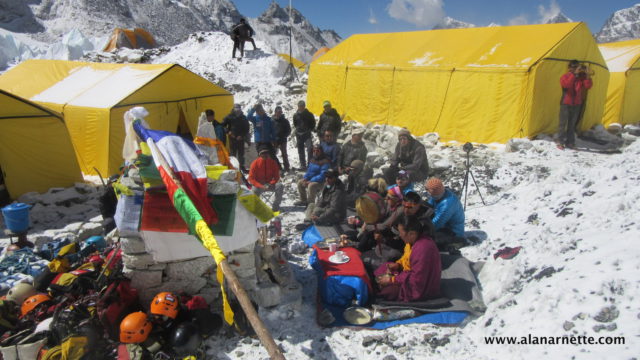
Everyone takes their place on the blankets after resting their climbing tools against the Stupa. Part of the ceremony is to ask forgiveness for hurting Chomolungma with the sharp points of the tools. But the most important part is to ask permission to climb the mountain and for safe passage. “Forgiveness, permission and safety,” you think these are qualities we should express every day.
The Lama begins with a low chant as he reads from the 200-year-old Tibetan prayer book. Everyone soon quiets down as the chanting occupies the entire team of Sherpas. Soon, a Sherpa laughs, others smile, and the environment is respectful but not overly serious.
One Sherpa begins to walk around offering snacks and Chiang to everyone. You shake your head, not wanting to drink any alcohol. It’s OK not to drink the firewater: the Sherpa smiles and moves on. Everyone is now relaxed as the Lama continues his chanting. A small black bird lands on the top of the flag pole, a Himalayan Chuff; it signifies good luck. Everyone smiles.
Without notice, the Lama and Sherpas performing the ceremony stand up. Another low baritone sound emerges. It raises and lowers, rises and lowers, and then, on a mysterious signal, everyone takes their handful of rice and throws it into the air three times, saying another mysterious chant. You have no clue, but it doesn’t matter. Now, everyone joins in doing their best imitation of a Tibetan chant. Listening carefully, you think the Tibetan ancestors would be pleased.
Thinking the Puja is over now that rice has been thrown in the air (actually, it was to ward off evil spirits), the puja moves to the next chapter. The Lama stops his chanting. Everyone stands up and begins to wander. But there is a system to this ceremony you simply don’t understand.
Suddenly, there is a commotion as a Sherpa with a handful of brown-powered barley flour spreads it all over your face. You really are confused, but it is a good thing, as laughter abounds. Barley flour symbolizes a white beard and a long life. Soon, everyone is smearing barley flour on one another.
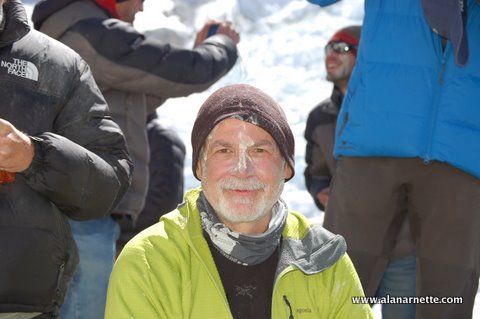
Then, something occurs you might never understand. One of the senior Sherpas opens the bottle of Jonnie Walker Whisky (no ‘e’ in this Scotch!). He pours a wee bit of the whisky into the cap and offers it to one of your teammates. He gingerly takes the cap and drinks. The Sherpa repeats this two more times. But as you saw the Sherpas do it, before they drink, they put one finger into the cap, barely dabbing their fingertip and then throwing it over their left shoulder three times. It’s a mystery.
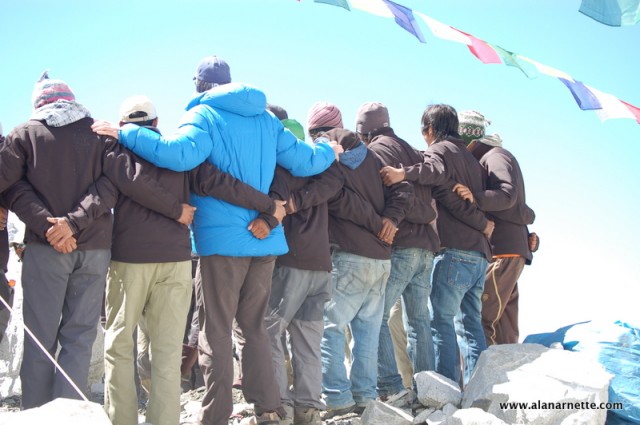
More laughing, and then the dancing starts. The Sherpas, with arms around one another, form a line and begin a dance that would make the Rockets proud. The climbers and trekkers join in. Another Sherpa walks around with the bottle of whisky, carefully pouring a small amount into the bottle cap; most everyone has a taste. More laughs and smiles.
The ceremony ends with a whimper as people drift away, deep in their thoughts about what the ceremony meant to them.
You return to your tent, emotions fully engaged. Clearly, for the Sherpas, it is an homage to Miyolangsangma, the Tibetan Goddess of Mountains, who lives on the summit of Everest. For others, it was a simple ceremony that symbolized the beginning of the climb. For others, it was entertainment, dismissing their beliefs.
You slowly let the ceremony seep in. The sounds, the visions, the seriousness the Sherpas took in placing the prayer flags, building the Alter, placing the tokens, sharps, and pictures. The sound of the Lama reciting the Buddhist prayers and the simple quiet between the moments.
No, you didn’t drink the Johnny Walker. But, yes, you turned your head and nodded when the Sampa was offered as an indication of long life. And yes, you felt the connection between what many consider commercialization and the reason so many people are here to climb Chomolungma.
Perhaps your true reason for your “why” is revealed. And yet, you retreat to the simple answers given before you left home, the reason you told yourself. And the veneer is slowly peeling away.
Climb On!
Alan
Memories are Everything
Everyday Everest
A new podcast series during the Everest 2024 climbing season.
Based on my 2020 Virtual Everest series, I’ll have a twenty-minute updated episode of the story a few times a week for the next two months. Everyday Everest follows a fictional team of nine climbers and their personal Sherpas from leaving home, trekking to base camp, acclimatizing, and finally, on their summit push. The story’s protagonist, Harper, sets the tone for the story when she tells her husband, Marc, “Honey, I’m going to climb Everest.”
You can listen to Everyday Everest on Spotify, Apple Podcast, Breaker, YouTube, Pocket Casts, RadioPublic, Anchor

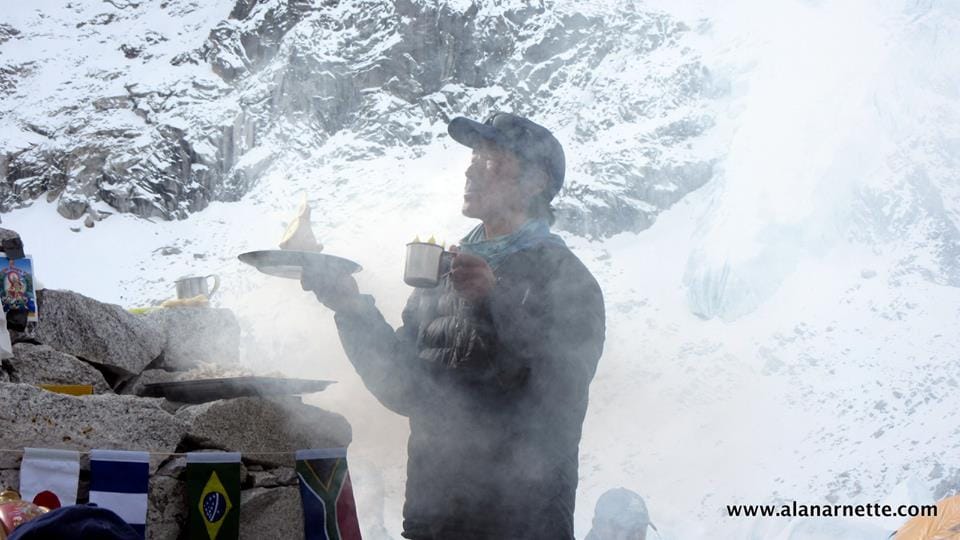
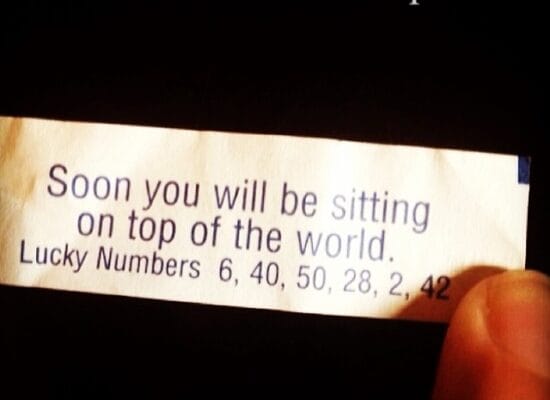


3 thoughts on “Everest 2024: Tibet Climbs in Peril”
Norgay or Hillary. Does not matter as they were the first. Together they made it happen.
Who actually summited Chomolungma first, T Norgay or E Hillary?
Hillary claimed it was him extremely late in his life.
Comments are closed.